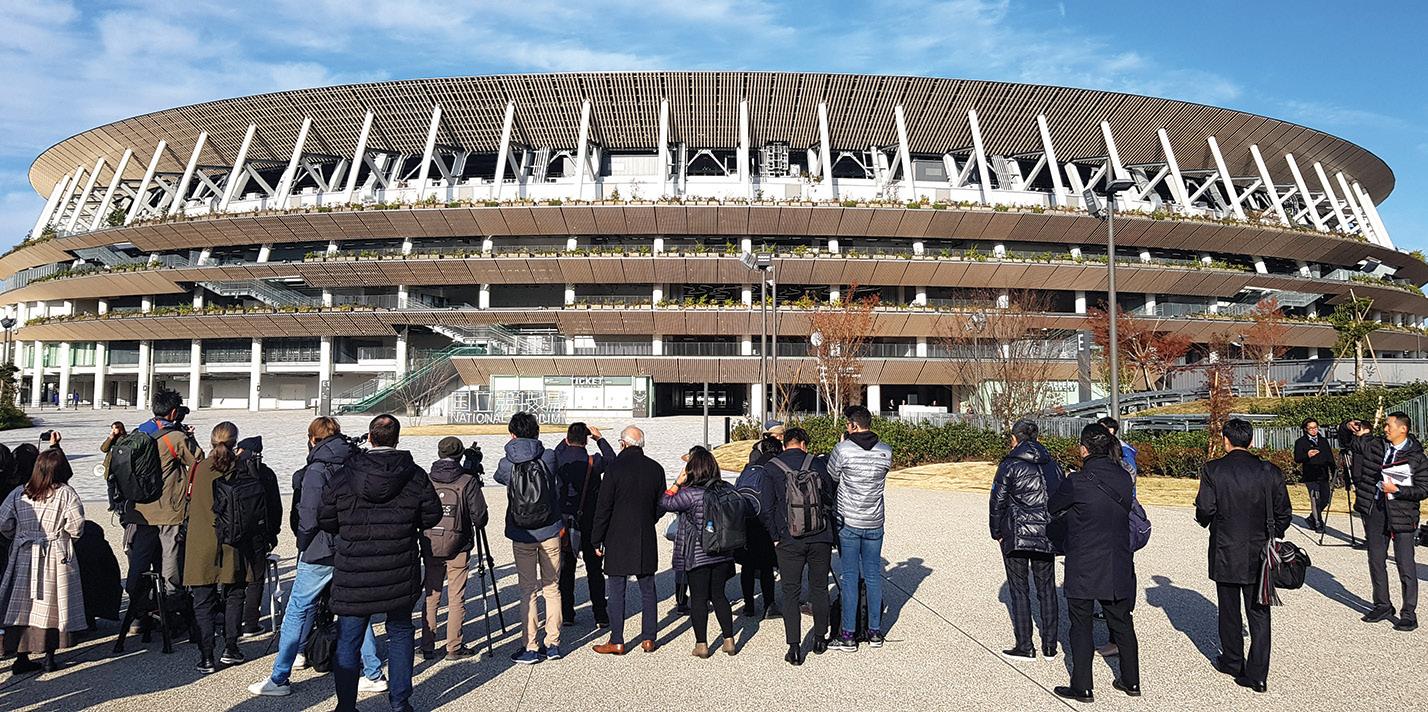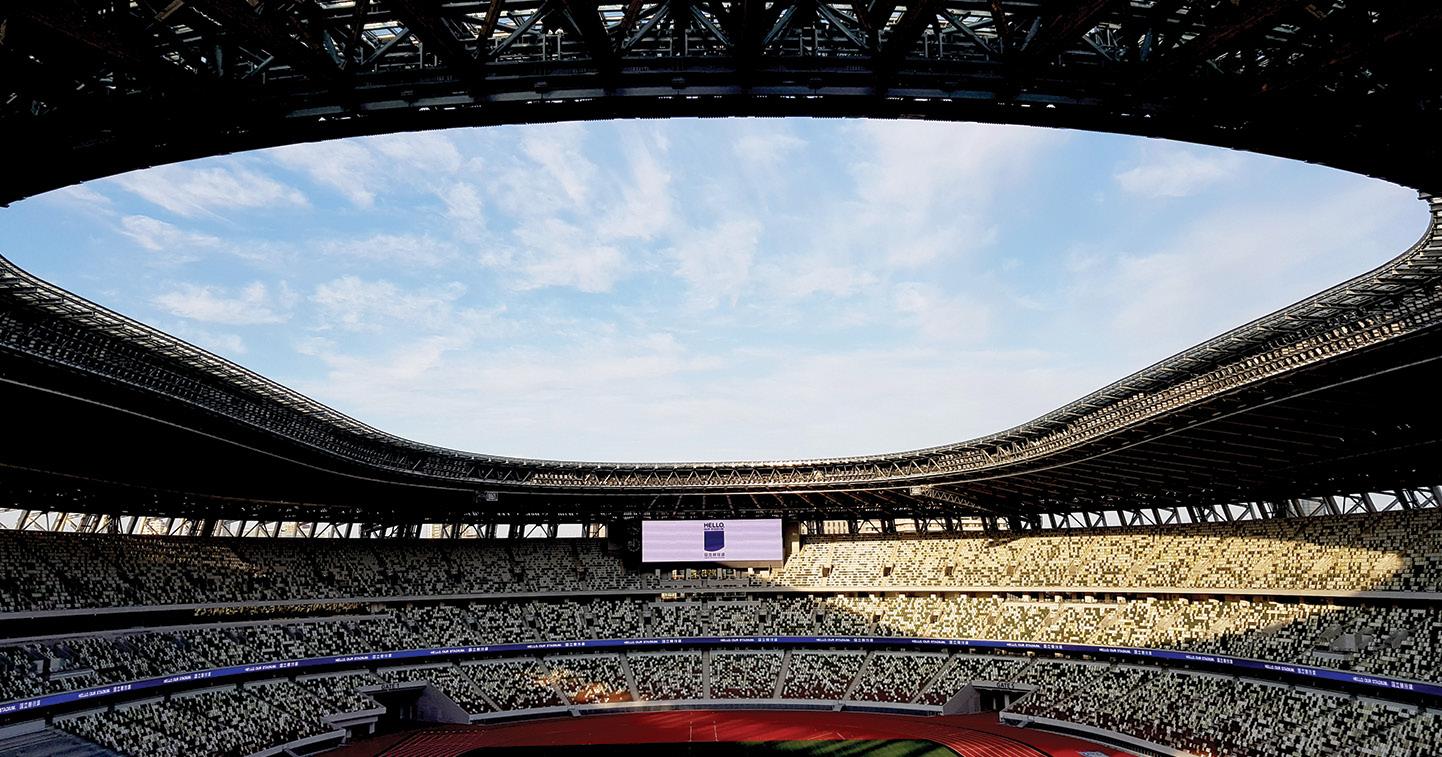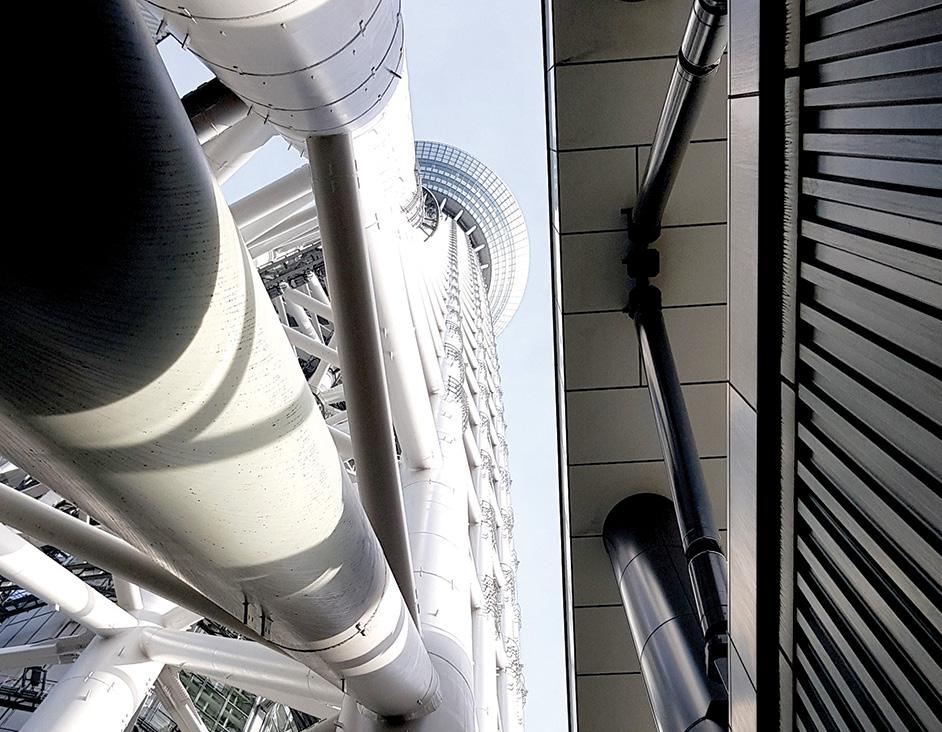
8 minute read
Discovering Japan during Tokyo Games in 2021 (Part 1)
Text by JUHAN KAMARUDDIN Images by JUHAN KAMARUDDIN & JAPAN NATIONAL TOURISM ORGANISATION
Tokyo gears up for Olympics & Paralympics in 2021
From 23 July 2021 until 5 September 2021, the world’s attention diverts to Tokyo, Japan for the Olympic and Paralympic Games, which will increase Tokyo’s – including Japan’s – appeal as one of the world’s leading destination cities. Tokyo, home to 35 million residents, aims to welcome 10 million international visitors annually, and the Games is an excellent platform to help Tokyo in reaching that target.
The Tokyo Olympics showcases 33 different sports that include baseball/softball, karate, skateboarding, sport climbing and surfing. On the other hand, the Tokyo Paralympics features 22 sports, with taekwondo and badminton making their debut.
Remaining true to its commitment as the most sustainable Games ever held, one of the initiatives undertaken by the Japanese government is in creating the Games’ medals from gold and silver salvaged from discarded or obsolete electronic devices donated by Japanese citizens like smartphones, digital cameras, handheld games and laptops. On the same note, 30% of the Olympic and Paralympic torches are made from recycled aluminium; the podiums used during the Games are made from recycled plastic; and the bedframes for the Athletes’ Village are made from sustainable timber-strength cardboard that later can be recycled into paper products – interestingly, each bed can support up to 200 kilograms!
Venues for the Games
Instead of building a singularly concentrated Olympic Park to specifically cater for the Games, the Japanese government spreads out the Games out two central zones within Tokyo. Travelling to the venues and other areas around Tokyo is a breeze because public transport in the city is super-efficient and exemplary, thus all visitors should fully take advantage of it.
The Tokyo Games utilises 43 venues in total, consisting of eight new permanent ones, 25 existing and 10 temporary sites. 42 of the 43 venues are used for the Olympics, while 21 of them are used for the Paralympics.
Some of the venues utilised during the Tokyo 1964 Games have been upgraded and reused for the Tokyo Games. As a matter of fact, up to 60% of the Tokyo Games’ venues employ existing facilities to minimise construction costs and footprint.
All venues utilised during the Games are situated in two separately themed zones: one demonstrates a vision for the future, while the other respects heritage. The latter, aptly named Heritage Zone, is shaped by the legacy of Tokyo 1964 Olympics, while the former, Tokyo Bay Zone, showcases a model of future urban development.
The main venue for Tokyo Olympics and Paralympics is the new National Stadium in Shinjuku, right on the same site as the old National Stadium that was demolished back in 2015, yet larger in terms of capacity. The architect for the new stadium, Kengo Kuma, stated that its design was inspired by traditional Japanese architecture such as Tokyo’s Edo-period temples, while simultaneously stands in harmony with the gingko tree-lined Jingu Gaien outer gardens of the Meiji Shrine.
The new National Stadium’s signature character is defined by the grand eaves made from cedar that is sourced from Japan’s 46 prefectures, combined with pine from sub-tropical Okinawa since cedar does not grow there.
At full capacity, the stadium accommodates up to 68,000 spectators using typical stadium seats at any one time; 8,000 of these seats can be removed to make way for 250 wheelchair seats when necessary.
The stadium’s roof – which is mounted with 1,500 lights, including supplementary lighting systems – is angled in such a way that shelters spectators from direct sunlight. During summer, the temperature within the stadium is controlled by fans that are used to ventilate the air. The new stadium’s track uses synthetic rubber, while its field is grown with natural grass and kept at 25 millimetres long.

Miraitowa (left) and Someity, cute mascots for the respective Tokyo Olympic and Paralympic Games.
On the new stadium’s Level 5, public can explore the Sora no Mori (Grove in the Sky) with 850-metre long walkway that can be accessed by wheelchair and open to the neighbouring urban surroundings, including the greenery that surrounds Meiji-jingu Shrine and Meiji Memorial Picture Gallery.
Accommodating the athletes and officials

The completed apartment buildings at the Athletes’ Village for the Tokyo Games.
To house the athletes and officials involved in the Games, Tokyo Metropolitan Government has facilitated the creation of the Olympic and Paralympic Athletes’ Village in Toyosu, strategically located 30 minutes’ bus ride away from the new National Stadium, nestling between the Heritage Zone and Tokyo Bay Zone.
Fully completed by end of 2019, the Athletes’ Village was constructed on reclaimed land formerly used as the site for trade fairs.
Consisting of 21 apartment-type buildings, each building is 14 to 18 storeys high. These apartments are eventually sold to the public as private homes at the starting price of ¥100,000,000 per unit. Due to high demand, the apartments are expected to sell out quickly, probably even before the Tokyo Olympic Games begin.
All units are fully furnished before the beginning of the Games. 18,000 beds are provided to the athletes and officials during the Olympics, while the Paralympics requires 8,000 beds. Once the Games are over, the furniture are taken out from the units.
Tokyo welcomes the world

Inside the new National Stadium in Shinjuku, which is the venue for the opening of Tokyo Olympic and Paralympic Games.
Due to the Japanese engrained tradition called omotenashi, which means ‘caring towards guests by anticipating and fulfilling their needs in advance’, international travellers and visitors are bound to feel welcomed wherever they go in Tokyo and anywhere else in Japan.
While receiving guests from all corners of the globe, the city anticipates more visitors from the United States and China to be flying in for the Tokyo Games in particular because both countries always show strong interest in the Games since their national teams are among the most competitive.

Members of the media recording and photographing the new National Stadium during its opening on 15 September 2019 from the outside.
According to Japan National Tourism Organisation ( JNTO), Tokyo has raised the number of hotel rooms for the Games to 19,000 to prepare for the influx of visitors. More accommodation options that lie in neighbouring prefectures outside Tokyo such as Kanagawa, Chiba and Saitama are available too, which offer the chance for visitors to see more of Japan.
On top of that, Tokyo is working on many projects; one example is in increasing the number of foreign-language signs along streets, stations, restaurants, and on passenger ships, which are expected to be important to ferry visitors to areas close to the Games’ venues. Non-Japanese speakers to Tokyo would be glad to know that nowadays, there are more signboards in English to help them get around.
Tokyo works hard in making the city barrier-free as possible for the convenience of people with disabilities, for instance the installation of platform gates and elevators at railway stations, the propagation of more Westernised toilets, and providing accommodations that take into consideration the usage of wheelchairs.
The government promotes the usage of smartphonebased payment systems at more shops too for visitors’ convenience, and tighter restrictions on indoor smoking is under way in preparation for the Games.
For more information on Tokyo Olympic and Paralympic Games, check out https://tokyo2020.org/en/.
Enjoying Tokyo
Since you are already in Tokyo, why not:
» Go up the Tokyo Skytree (http://www.tokyo-skytree. jp/en/) to appreciate this megacity’s landscape from above! Opened on 22 May 2012 with the total height of 634 metres, this tower is the tallest free-standing broadcasting tower in the world! Its primary role is to transmit radio waves for television and radio broadcasting, besides serving as an observation and scientific research facility to measure air quality and greenhouses gases, among others. You can take in the view of Tokyo either from Tembo Deck that is 350 metres above ground, or from the 450-metre high Tembo Galleria.

The view of Tokyo Skytree’s Main Pod from the base supported by steel structure all the way up.
» Drop by at teamLab Borderless (https://borderless. teamlab.art/) digital art museum in Odaiba to be immersed in surreal and out-of-this-world digital art, leaving you entirely in awe! Don’t forget to savour a spot of tea at En Tea House (https://en-tea-house.teamlab.art/odaiba/) inside the museum, which allows you to magically interact with digital art cleverly projected onto your cup of tea or bowl of green tea ice cream!
» Book a table at the Brasserie Paul Bocuse Le Musee (https://www.hiramatsurestaurant.jp/eng/paulbocuse-musee/) to experience Michelin-star-inspired fine dining on the third floor of the sharp-looking Kisho Kurokawa-designed National Art Centre in Roppongi, which is a museum that displays only temporary exhibitions and has no permanent collections.
» Walk around Omotesando area to visit cosy cafes and fashion stores, including interesting museums. This is an area where traditional and cutting-edge architectural styles meld together, which are bound to inspire travellers, particularly architecture and urban planning enthusiasts!

The zelkova tree-lined Omotesando avenue (photo by Japan National Tourism Organisation).
» Arrange a private sightseeing tour to Omiya Bonsai Art Museum (https://www.bonsai-art-museum.jp/en/) in Saitama. Guests should visit this museum to learn about the history and art of bonsai cultivation, which is strongly rooted in Japanese culture. The trip to the museum is sure to open guests’ eyes towards the beauty of bonsai and the effort required to cultivate it. Afterwards, walk around the Omiya village to admire the bonsai plants grown in the residents’ front gardens, including bonsai nurseries, if they are open to public.
» Visit Mt. Takao by first taking the 20-minute train ride from Shinjuku station using the Keio Line (https:// www.keio.co.jp/english/index.html) to get to Takaosanguchi (‘Entranceway to Mount Takao’) station, designed by none other than Kengo Kuma, the architect for the New National Stadium himself. Travellers should then ride the funicular railway up to Mount Takao, where they can visit the temple called Takao-san Yukuo-in that has been established since 744 A.D., built in Japanese Buddhist vernacular style. The temple also serves unbelievably satisfying and delicious Buddhist vegetarian cuisine (syojin ryori) for lunch (https:// www.takaosan.or.jp/english/syojin-ryori.html), which travellers should try after exploring Mount Takao’s natural enviroments. To dine, make sure that you book in advance by calling +81 42 661 1115. On the way down, travellers should descend using chairlift, which offers unimpeded views of the surrounding area and Tokyo city in the distance.

Buddhist vegetarian cuisine (syojin ryori) served at Yukuo-in Temple.
Tip: To obtain up-to-date information on where to go throughout Japan, travellers are recommended to download Japan Official Travel App (https://www.jnto.go.jp/smartapp/ eng/about.html) onto their mobile devices, which prove remarkably handy since it delivers latest information about travelling in Japan, including emergency information about medical assistance and embassy contact list.
Gaya Travel Magazine management team members express our heartfelt gratitude to Japan National Tourism Organisation for making the writer’s trip to Japan possible.










